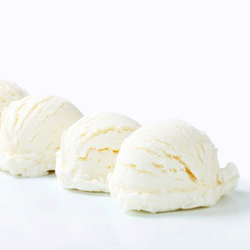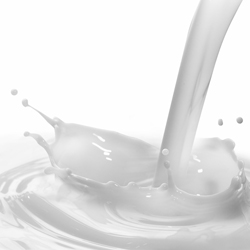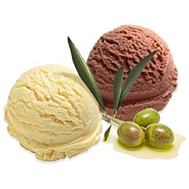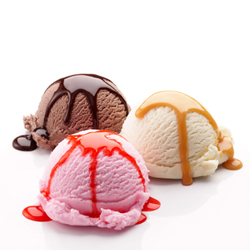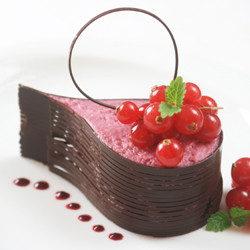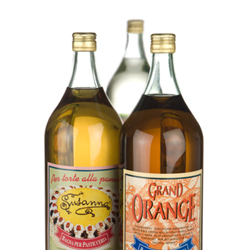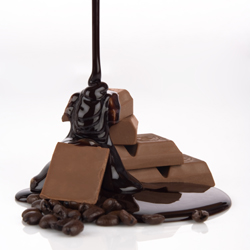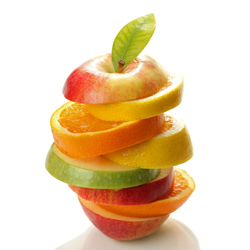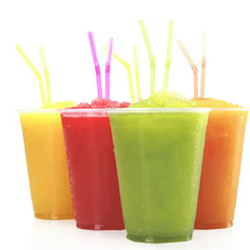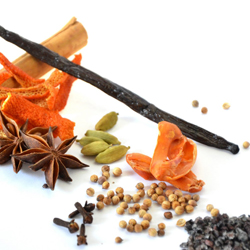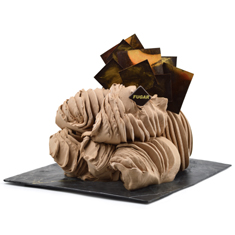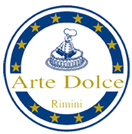Features of traditional Gelato and commercial Ice-cream

From a production point of view, there are two types of gelato: commercial ice-cream and traditional gelato.
It is usually very easy to find nutritional information about commercial ice-cream (sold in cups, biscuits, cones or tubs), since nearly all modern packaging shows the calories per 100g and the macro-nutrients.
In contrast, it is much more difficult to estimate the calories in traditional gelato, where the amount of the highest-calorie ingredients (in particular sugar, and sometimes cocoa or fruit such as banana, avocado or dried fruit) varies according to the recipe used by each gelato-maker.
Traditional gelato
This type of gelato is characterised by the use of fresh raw materials. It is produced by slowly incorporating air to around 30-50% of the total volume, while freezing the mixture: the result is a soft and full-bodied cream.
The main differences from commercial ice-cream are as follows:
- lower fat content (5-8% in traditional gelato and 8-13% in commercial ice-cream);
- lower air content (max. 50% in traditional gelato and min. 90% in commercial ice-cream).
The main ingredient in traditional gelato (cream flavours) is milk (at least 70%), followed by sugar (18%) and cream (10%).
Usually, the base mixture for the different flavours is pasteurised in order to make it safe and hygienic.
Fruit flavours of traditional gelato, on the other hand, have more sugar as well as fruit (at least 25%).
Commercial ice-cream
This type of ice-cream is typically produced many months before it is used, using mixtures and raw materials such as powdered milk, concentrated fruit juice and additives such as colourings, emulsifiers, stabilisers and flavourings.
Commercial ice-cream is also known as streamed ice-cream, because the air is streamed into it during the freezing process up to 100-130%, making it very soft and light.
As it is distributed even in areas a long way from where it was produced, commercial ice-cream needs to be supported by an efficient cold chain, keeping it at a constant temperature always below -18°C all the way from production to the point of sale.
As we know, traditional gelato is formed by agglomerating air little by little into the base mixture made from fresh milk, sugar and other ingredients according to the flavour. Commercial ice-cream is often made with powdered milk, fruit juice instead of fresh fruit and other substances (as well as preservatives) such as colourings, additives to help the mixture emulsify, stabilisers and flavourings to make up for the lack of fruit or other base ingredients and make the product taste better.
It is usually very easy to find nutritional information about commercial ice-cream (sold in cups, biscuits, cones or tubs), since nearly all modern packaging shows the calories per 100g and the macro-nutrients.
In contrast, it is much more difficult to estimate the calories in traditional gelato, where the amount of the highest-calorie ingredients (in particular sugar, and sometimes cocoa or fruit such as banana, avocado or dried fruit) varies according to the recipe used by each gelato-maker.
Traditional gelato
This type of gelato is characterised by the use of fresh raw materials. It is produced by slowly incorporating air to around 30-50% of the total volume, while freezing the mixture: the result is a soft and full-bodied cream.
The main differences from commercial ice-cream are as follows:
- lower fat content (5-8% in traditional gelato and 8-13% in commercial ice-cream);
- lower air content (max. 50% in traditional gelato and min. 90% in commercial ice-cream).
The main ingredient in traditional gelato (cream flavours) is milk (at least 70%), followed by sugar (18%) and cream (10%).
Usually, the base mixture for the different flavours is pasteurised in order to make it safe and hygienic.
Fruit flavours of traditional gelato, on the other hand, have more sugar as well as fruit (at least 25%).
Commercial ice-cream
This type of ice-cream is typically produced many months before it is used, using mixtures and raw materials such as powdered milk, concentrated fruit juice and additives such as colourings, emulsifiers, stabilisers and flavourings.
Commercial ice-cream is also known as streamed ice-cream, because the air is streamed into it during the freezing process up to 100-130%, making it very soft and light.
As it is distributed even in areas a long way from where it was produced, commercial ice-cream needs to be supported by an efficient cold chain, keeping it at a constant temperature always below -18°C all the way from production to the point of sale.
As we know, traditional gelato is formed by agglomerating air little by little into the base mixture made from fresh milk, sugar and other ingredients according to the flavour. Commercial ice-cream is often made with powdered milk, fruit juice instead of fresh fruit and other substances (as well as preservatives) such as colourings, additives to help the mixture emulsify, stabilisers and flavourings to make up for the lack of fruit or other base ingredients and make the product taste better.

